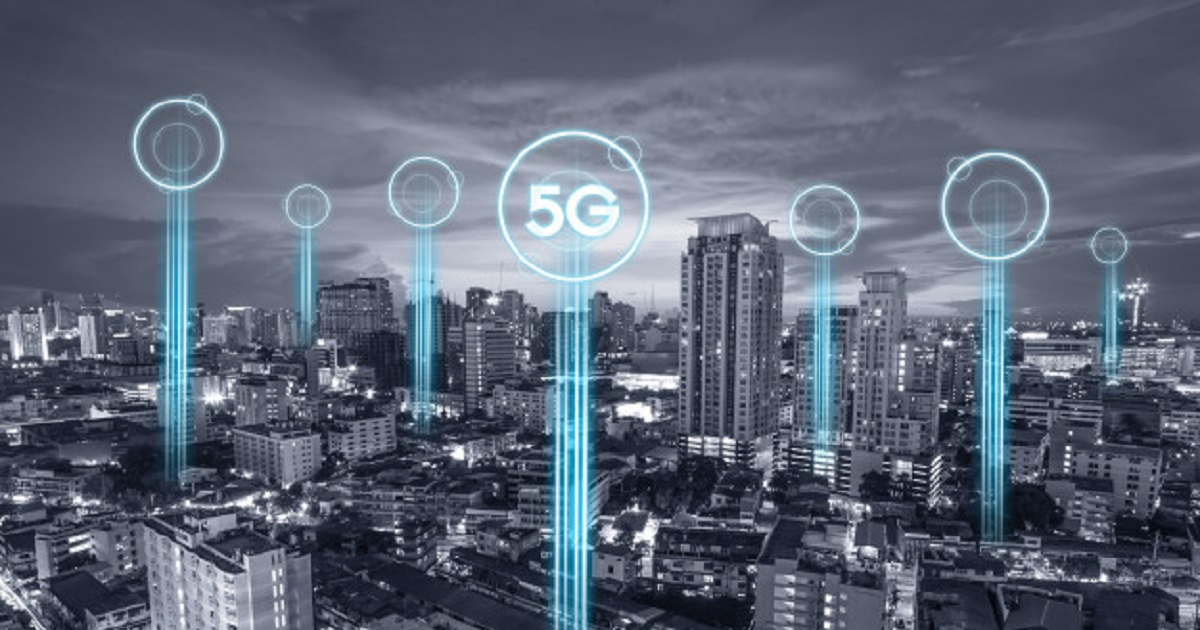
5G
Article | May 18, 2023
The increasing use of mobile applications and digital payment services has not only paved the way for new banking models, but also highlighted the importance of user experience in digital banking. Banking applications are now developed completely on cloud, support multiple platforms, and use AI/ML extensively. Security, a critical aspect of digital banking, has transformed with innovative capabilities like self-service identity verification, passwordless access, risk-based multi-factor authentication (MFA), behavioral analytics, and encryption capabilities.
The underlying reason for developing the above-mentioned capabilities is to provide consumers with a secure banking experience, where they can access their financial data without fear and conduct transactions with ease. For the bank employee, it is all about working with the latest digital services and securely accessing them from anywhere. It is important to understand that user experience, be it consumer or workforce, is all about providing convenience and establishing trust. Only then can a financial institution remain ahead of the competition.
Read More

Data Center Networking
Article | July 5, 2023
The much-anticipated 5G Standalone has arrived. T-Mobile is the first to launch it in the USA, covering 250 million people across 7,500 cities and towns, including rural areas. China Mobile is the only other service provider to launch it in Hong Kong. Overall, 58 operators are currently investing (November 2020) in 5G SA, including those who have launched.
5G SA makes a break from 5G non-standalone by integrating the evolved packet core or the signaling brain of the 5G network, which controls the network's devices. It prepares the groundwork for new services unique to this generation of networks, such as network slicing to customize enterprise services across multiple networks.
Read More

Network Management, Network Security
Article | July 17, 2023
5G small cells form the backbone of the modern wireless networks. Learn more about this technology is revolutionizing 5G deployment and enabling various use cases across industries in this article.
Contents
1 Introduction to 5G Small Cells for Modern Businesses
2 5G Small Cells: Overview
2.1 Characteristics of 5G Small Cells
2.2 How Small Cells Fit into 5G Architecture
3 Benefits of 5G Small Cells for Businesses
3.1 Improved Coverage and Capacity
3.2 Enhanced Network Performance
3.3 Lower Latency
3.4 Cost-effectiveness
4 Use Cases for 5G Small Cells
4.1 Urban Areas
4.2 Rural Areas
4.3 Indoor Environments
5 Conclusion
1 Introduction to 5G Small Cells for Modern Businesses
Small cells are low-power radio access nodes that operate in licensed and unlicensed spectrum bands and are typically deployed in areas with high demand for wireless connectivity. They are a vital component of the 5G wireless network architecture and are designed to complement traditional cell towers, providing improved coverage, network capacity, and faster data speeds. Small cells come in several types, including femtocells, picocells, and microcells, and can be deployed according to the use case.
2 5G Small Cells: Overview
2.1 Characteristics of 5G Small Cells
5G small cells are characterized by small form factors and are designed to be compact and discreet for deployment in various settings, such as urban areas, rural areas, indoor environments, and public spaces. In addition, they consume less power than traditional cell towers, making them more energy-efficient. They also operate on high-frequency bands, which enables them to provide faster data speeds and lower latency than traditional cell towers, which makes small cells essential for 5G.
The 5G small cell architecture can be deployed in dense networks, providing better coverage and capacity in areas where traditional cell towers may not be able to reach. Also, a 5G small cell antenna can be configured to provide seamless handoffs between cells, ensuring users have a consistent and uninterrupted wireless experience. These characteristics make them ideal for specific 5G use cases, which will be explored further in the article.
2.2 How Small Cells Fit into 5G Architecture
Small cells and 5G evolution are closely linked, and this technology is an ideal solution for future wireless networks. They offer greater capacity, coverage, and flexibility than traditional cell towers, allowing them to meet the demands of an increasingly connected world.
By operating on high-frequency bands and being deployed in dense networks, small cells in 5G can provide faster data speeds, lower latency, and better coverage than previous generations of wireless networks. Additionally, their small form factor and flexible deployment options allow for use cases like private 5G networks that revolutionize industries.
3 Benefits of 5G Small Cells for Businesses
5G networks will support a massive increase in connected devices, including smartphones, IoT sensors, and other devices. Small cells are critical for achieving the full potential of 5G networks and the exciting new applications and services they will enable.
3.1 Improved Coverage and Capacity
5G small cells offer improved coverage over traditional cell towers in certain situations, particularly in urban areas. Buildings and other obstacles interfere with wireless signals, so the connection quality decreases in areas with such infrastructure. By deploying small cells closer to users, the network can provide better coverage and capacity in these areas.
Small cells can also be deployed indoors, providing better coverage and capacity in buildings and other enclosed spaces. This is important due to poor wireless range, signal interference from walls, and other obstacles. By deploying small cells indoors, the network can provide better coverage and capacity in these areas, improving the overall wireless experience for users.
3.2 Enhanced Network Performance
The deployment of small cells enables network densification, which allows several devices to connect to the network simultaneously. This can help reduce network congestion and improve overall network performance, particularly in urban areas. They can also be configured to provide seamless handoffs between cells, ensuring that users have a consistent and uninterrupted wireless experience. This is important because users often move between different areas with different coverage levels and capacities, providing a streamlined experience.
3.3 Lower Latency
Small cells are designed to operate on high-frequency bands, which enables them to provide faster data speeds and lower latency than prior generations of wireless networks. This is especially important for applications that require real-time communication, such as virtual reality, autonomous vehicles, and remote surgery. By providing faster data speeds and lower latency, small cells can help enhance these applications' performance, providing a better overall user experience.
3.4 Cost-effectiveness
Small cells offer a cost-effective alternative to traditional cell towers, particularly in urban areas with high land and real estate costs. By mounting 5G small cell antennas on existing infrastructure, such as lampposts and buildings, deployment costs can be lowered. Additionally, small cells can be deployed in a modular fashion, allowing for targeted and cost-effective expansion based on the required coverage and capacity. This approach avoids large-scale and expensive deployments of new infrastructure. Moreover, small cells can be powered by low-cost, low-power sources like solar panels or batteries, reducing ongoing operational costs. Furthermore, small cells consume less power than traditional cell towers, resulting in lower energy costs.
4 Use Cases for 5G Small Cells
4.1 Urban Areas
As discussed previously, small cell radio antennas in 5G can improve networks in dense urban environments, alleviating network congestion and improving data speeds. In addition, by deploying small cells in areas with high user demand, network operators can provide targeted coverage and capacity improvements to specific areas, ensuring that users have fast and reliable connectivity.
4.2 Rural Areas
Small cells can be used to extend coverage to underserved or unserved areas by traditional cell towers. They can fill in coverage gaps, providing reliable connectivity to users in rural areas that may not have access to high-quality wireless services. This will enable use cases such as remote workforces in rural areas, smart agriculture, and distance education and training.
4.3 Indoor Environments
Traditional cell towers may not be able to provide reliable connectivity indoors due to physical barriers such as thick walls and ceilings. Small cells can provide targeted coverage and capacity to specific areas, such as conference rooms or shopping malls, where users require high-quality wireless connectivity. In addition to improving range, small cells can help alleviate network congestion and improve data speeds in high-traffic indoor environments.
5 Final Thoughts
Small cells are a crucial element in developing and implementing 5G technology. By leveraging a small form factor and high-frequency band usage, small cells facilitate the deployment of 5G networks in a more cost-effective and targeted manner than traditional cell towers. They support a wide range of use cases by providing reliable and high-quality wireless connectivity to a growing number of devices. They will continue to be a critical technology for businesses and organizations seeking to leverage the benefits of 5G technology.
Read More

Article | May 5, 2021
The next-generation of wireless technologies - known as 5G - is here. Not only is it expected to offer network speeds that are up to 100 times faster than 4G LTE and reduce latency to nearly zero, it will allow networks to handle 100 times the number of connected devices, revolutionizing business and consumer connectivity and enabling the "Internet of Things." Leading policymakers - federal regulators and legislators - are making it a top priority to ensure that the wireless industry has the tools it needs to maintain U.S. leadership in commercial 5G deployments. This blog provides monthly updates on FCC actions and Congressional efforts to win the race to 5G.
Read More